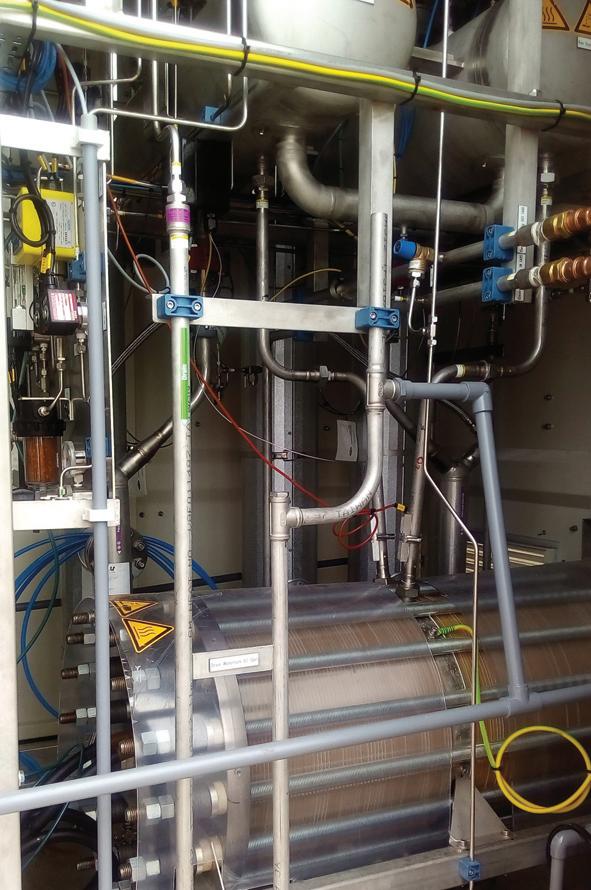
6 minute read
Fuel for thought
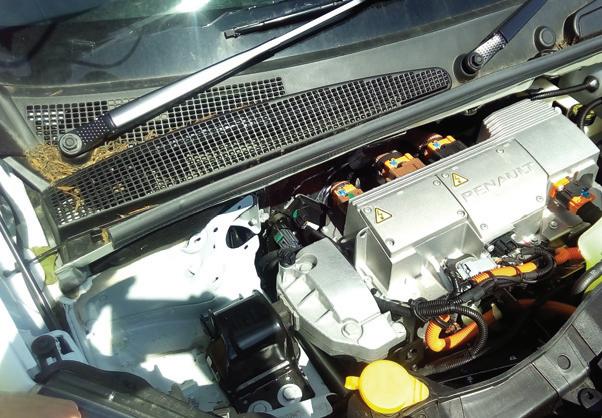
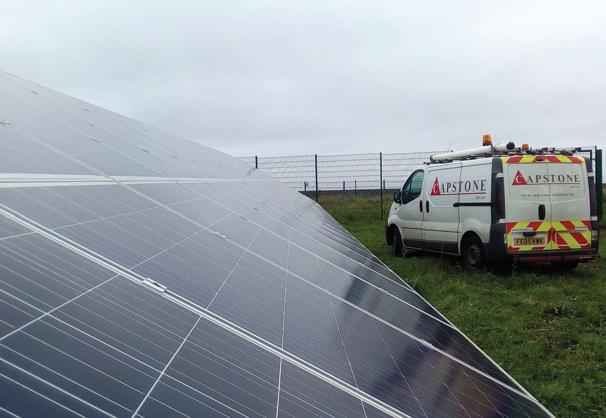
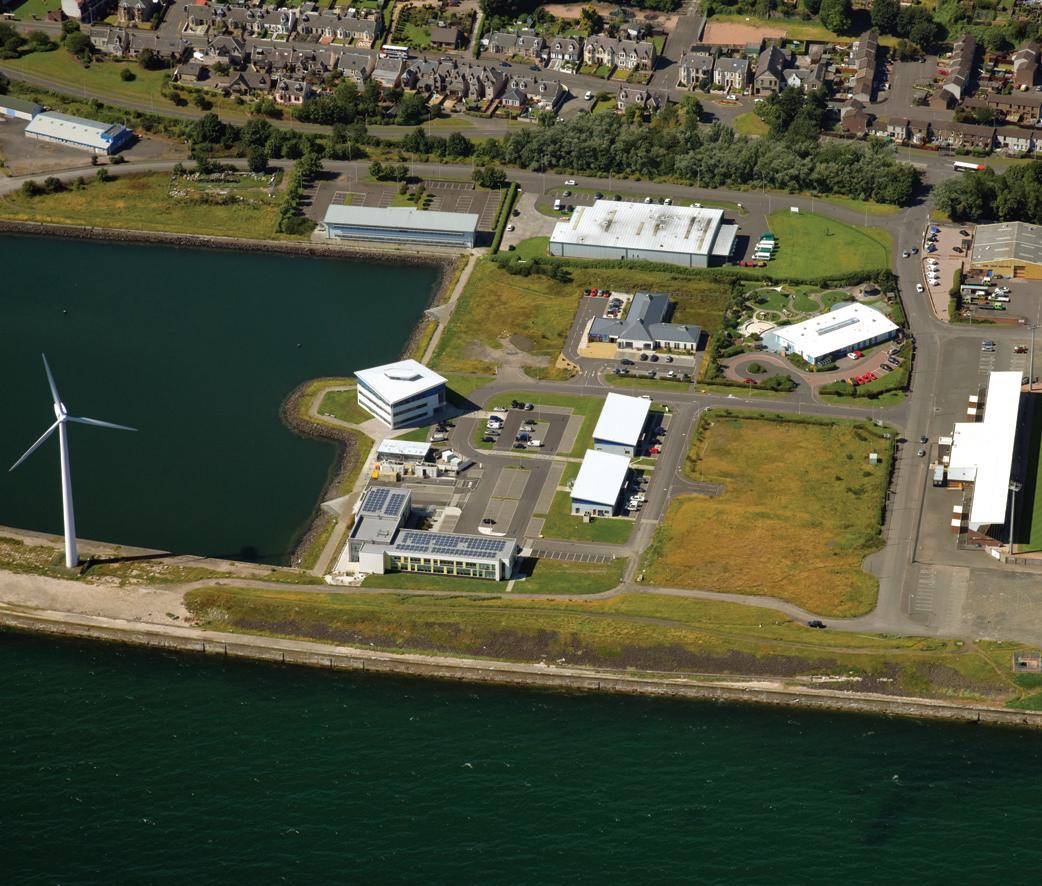
Hydrogen technology is at the heart of the revolutionary Levenmouth community energy project in Fife, which is addressing the provision of low-carbon transport and energy storage
By Andrew Brister
There’s a quiet revolution taking place in the historic county of Fife. The region is busy positioning itself as a leader in the energy sources of the future. Fife became a centre of heavy industry in the 19th century, with coal mining fuelling its success. Today, it’s no longer coal that’s driving the county: it’s a combination of renewable and hydrogen energy.
Fife’s Levenmouth community energy project aims to shape the future prosperity of local communities through several green hydrogen schemes. The project receives £4 million from the Scottish Government’s allocation of the Local Energy Challenge Fund, and is said to be the world’s foremost demonstrator of innovative applications of hydrogen derived from renewable sources. The project is a partnership between Bright Green Hydrogen, Fife Council, Toshiba, Leven Valley Development Trust, Fife College, BOC, Green Business Fife, Community Energy Scotland and the Scottish Hydrogen and Fuel Cell Association (SHFCA).
The community energy project builds upon the development of the Hydrogen Off ice in Methil (see box) to make Levenmouth the home of Europe’s largest mixed fleet of hydrogen dual-fuel vehicles (up to 17) and refuse-collection vehicles. Hydrogen refuelling is to be installed at both the Hydrogen Off ice and at the Fife Council vehicle depot at Bankhead in Glenrothes.
The visionary project positions Levenmouth at the heart of the next generation of clean energy evolution. This not only brings economic benefits to the area but is a demonstration of how hydrogen can decarbonise energy in Scotland and help secure future energy supplies for generations to come.
Renewable partner
Hydrogen is stored at the Methil site and reconverted to electricity at times when onsite wind and solar generation is low. This pattern will help off set the intermittency of
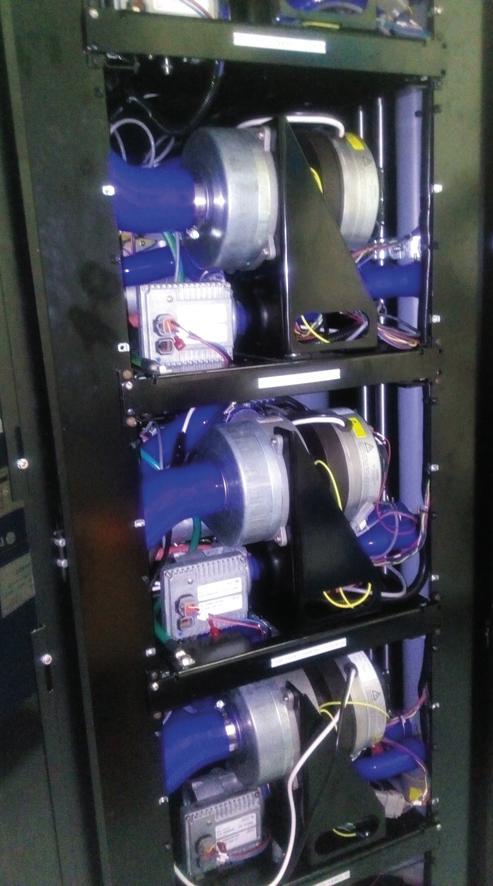
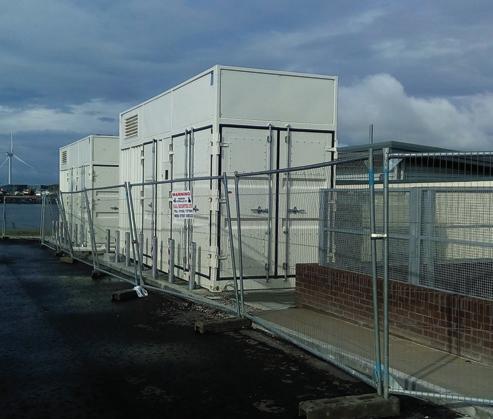
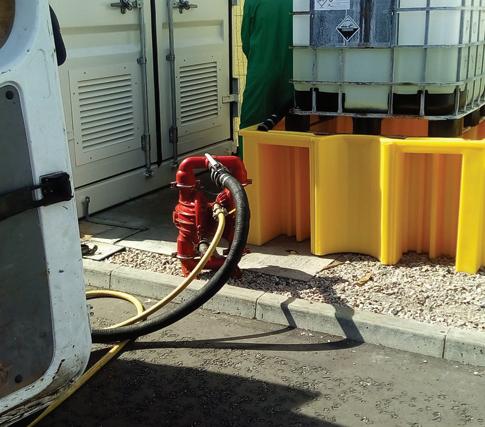
> The project involves several green hydrogen schemes
renewable energy generation, and improve the business park’s ability to be energy self-suff icient.
Such an approach will also demonstrate how more renewable energy can be connected to the grid nationally, by alleviating the network export constraints that are becoming common at times of peak renewable generation. In addition to the energy-balancing system, two independent hydrogen refuellers provide vehicle refuelling to Bright Green Hydrogen’s and Fife Council’s demonstrator fleet.
Principal contractor on the Levenmouth Community Energy Project is NICEIC-registered firm Capstone. The company is overseeing the final stages of the £6.5 million project, with handover expected this summer. “It’s not just a demonstrator project for hydrogen technology,” says Jack Gilmour, director at Capstone. “It’s also about energy storage, and the commercial supply of hydrogen for use in vans and the council’s refuse vehicles.”
Capstone is overseeing the work to extend the energy park’s renewable resources beyond the Hydrogen Off ice’s wind turbine and ground source heat pump to include a 112kW, ground-mounted, solar photovoltaic system, a 48kW, roof-mounted PV to Fife Renewables Innovation Centre, and infrastructure for East Fife’s stadium roof-mounted PV system to provide top-up electricity on days when there is little or no wind. Energy can be exported to the National Grid when the hydrogen system is full.
“We are also bringing about the private wire micro grid system for the business park, and integrating the hydrogen energy balancing system with these renewables,” says Jack. The hydrogen energy storage and dispensing equipment at the site has been installed by Logan Energy, while the hydrogen energy management system has been implemented by project partner Toshiba, which will also play an active role in the development of project learning.
“You’ve got to consider the export limit with the distribution network operator (DNO),” he says. “You have to manage when to use the energy, when to store it, and when to use the stored hydrogen to fill the vehicles.”
Capstone has provided the telecoms and electrical control infrastructure for the project. “We’ve had to dig up half the business park to install new cable and telecoms duct systems
Beacon of hope
The Hydrogen Offi ce project shows how energy effi ciency, renewables and hydrogen can reduce the future impact of climate change and concerns over security of energy supply.
The Methil business park is powered by a novel renewable and hydrogen energy system, using renewable energy when available from a 750kW wind turbine located in the adjacent docks and 160kW of solar PV panels, while storing surplus energy as hydrogen for a proportion of the building’s needs for periods where renewables are unable to meet demand.
Hydrogen is produced by a 250kW proton exchange membrane (PEM) electrolyser, that supplies around 100 kg of hydrogen a day at full power. The hydrogen is stored in two tanks. One stores 25kg of hydrogen at 30 bar, which equates to around 800kWh of energy. A second stores 20kg of hydrogen, also at 30 bar (660kWh). A 100kW PEM fuel cell recombines the hydrogen from storage with oxygen from the air to supply the building if there is no renewable energy available.
In addition, the site has two all-in-one hydrogen production and dispensing units, which provide fuel to the vehicle fl eet.
The Hydrogen Offi ce building also includes other energy effi ciency features. Increased insulation minimises heat loss; natural ventilation avoids the use of air conditioning; sunlight is maximised to cut the need for artifi cial lighting; and a ground source heat pump maintains most of the heating and hot water.
to integrate the park,” says Jack. The works also extend to East Fife football stadium, and the distances involved mean everything is connected by fibre optic links. “A major challenge was managing the excavation, because there is significant footfall and vehicle movement in the park,” he says. To add to the scale of the task, the weather was particularly wet when the ground works were being carried out.
Seamless transfer
A key element of the project was installing the bespoke switching system that allows seamless transfer between energy sources. “We’ve used fast-acting, closed transition transfer switches from Emerson,” he says. “Load equipment cannot perceive any of the switching cycles. Remote terminal units are installed adjacent to the switches, and are controlled centrally by the micro grid controller developed by Toshiba. They enable switching of loads in buildings depending on the renewable energy available, using trend analysis and weather data to forecast supply and load demands.”
The Hydrogen Off ice takes priority on the renewable energy supply, and second priority is allocated to the production of hydrogen for the fleet of vans and refuse vehicles. The remainder is used by the rest of the business park and the football stadium. Capstone has had to work closely with Scottish Power, the DNO for the region. Five transformers feed the various buildings on the park and the stadium.
“It’s been a challenge to maintain a safe site and deliver the project in a timely fashion,” says Jack. The lessons learnt will surely be rolled out widely in the years ahead.




